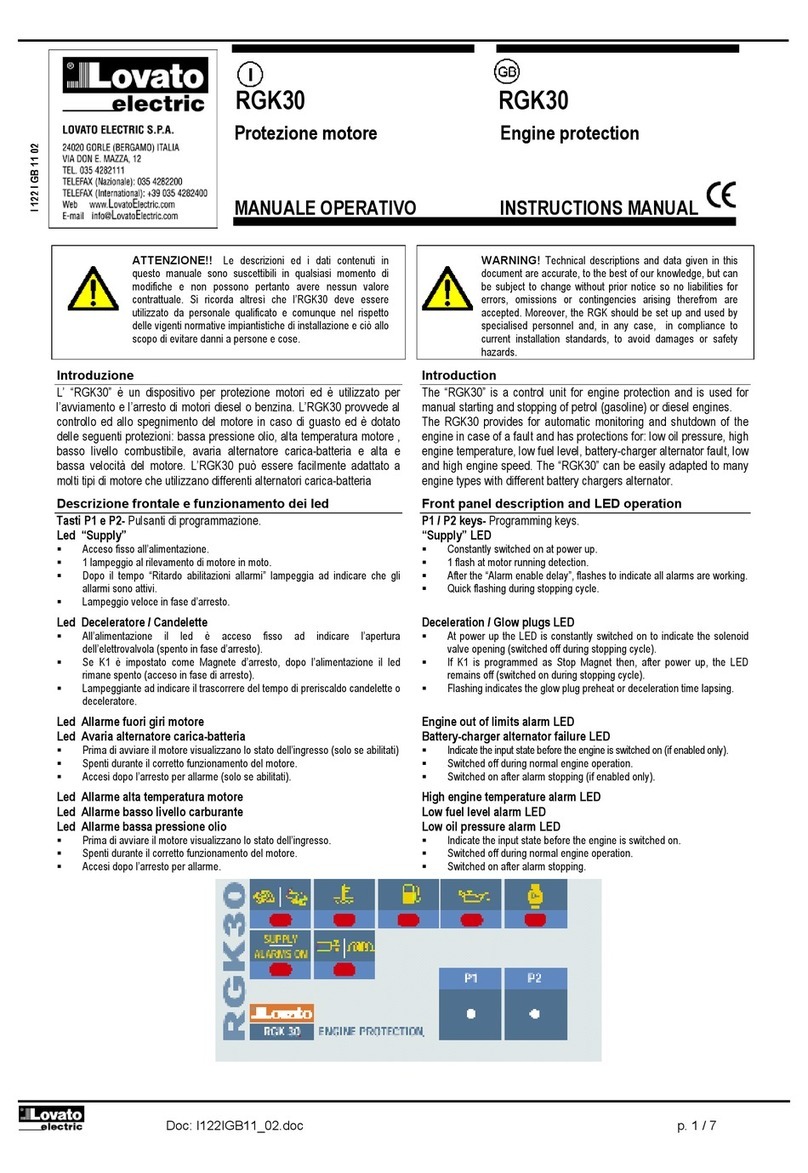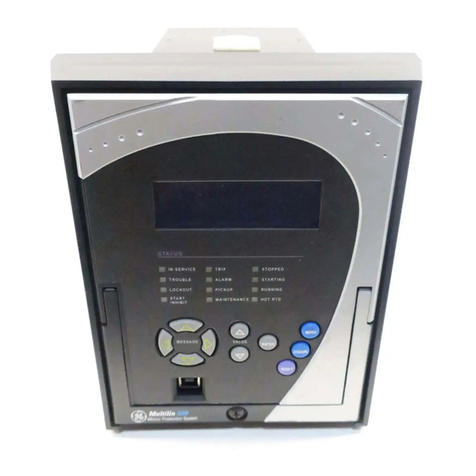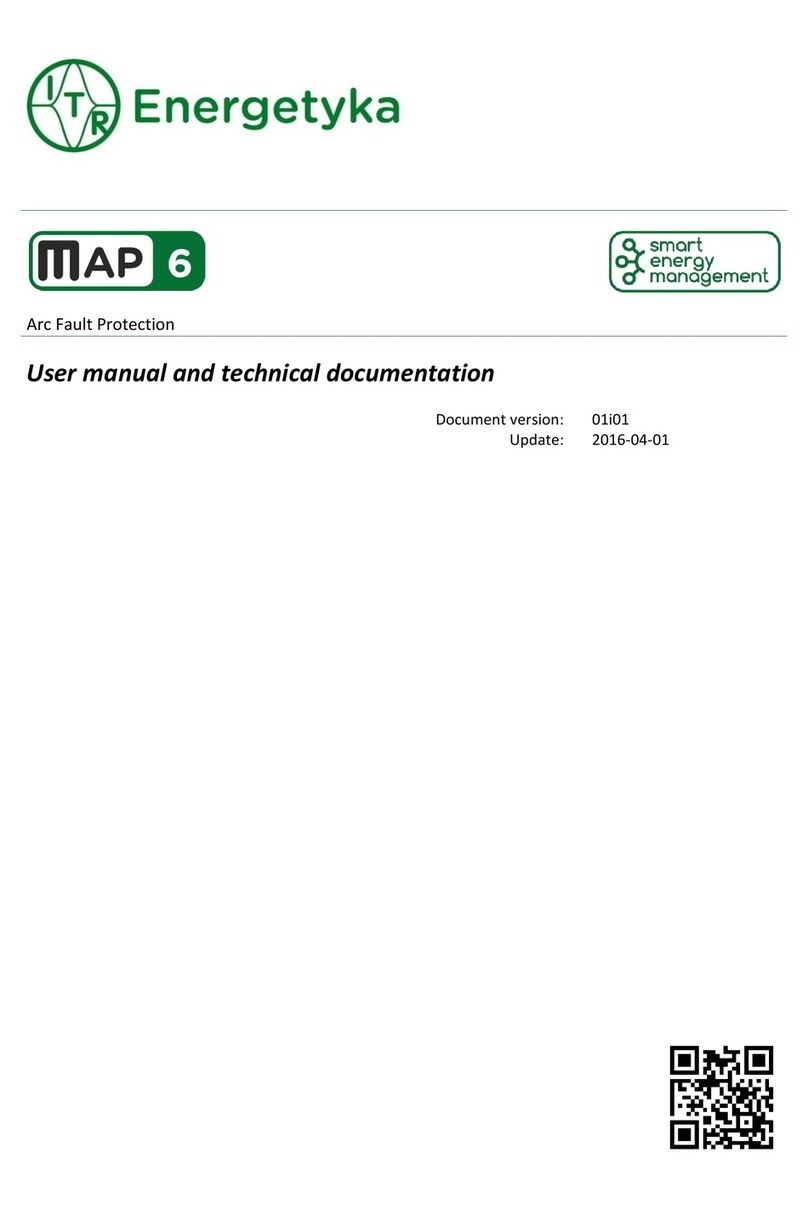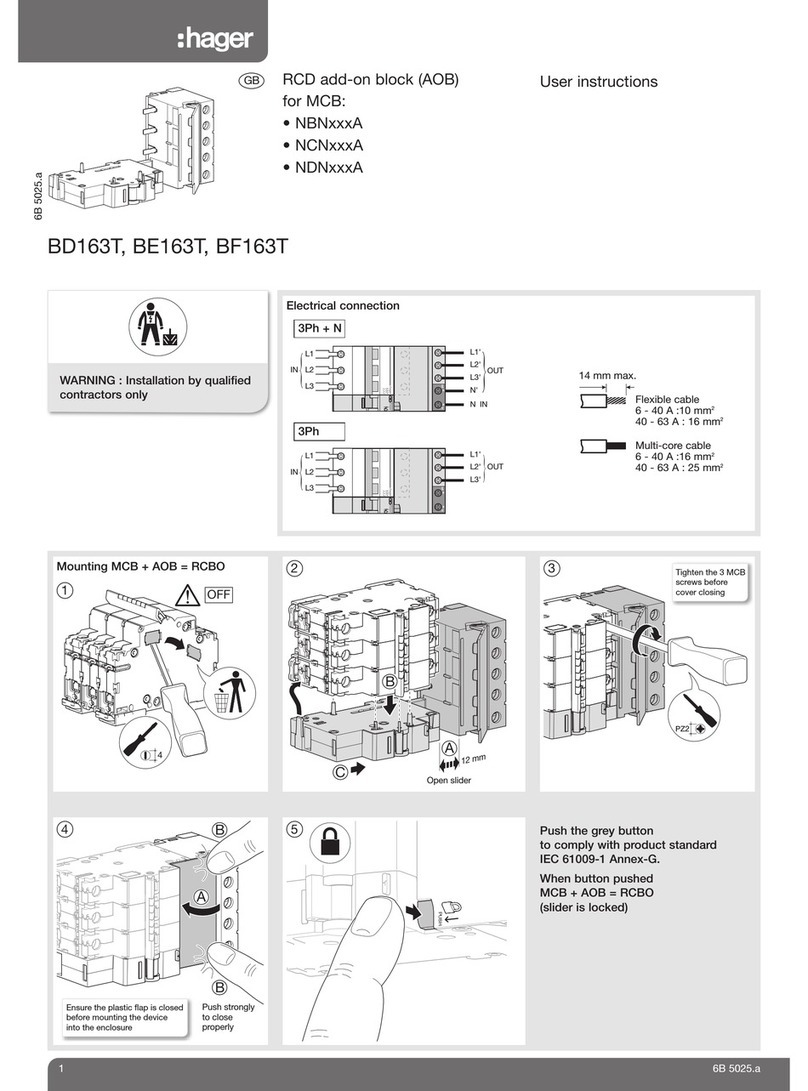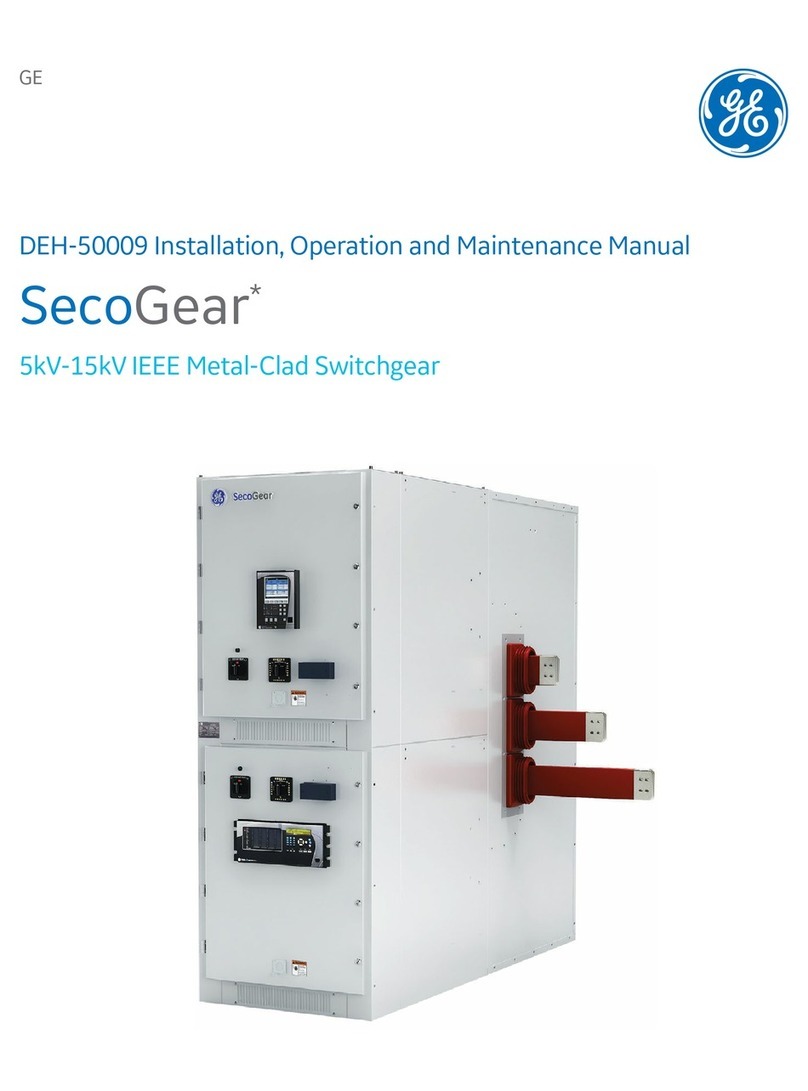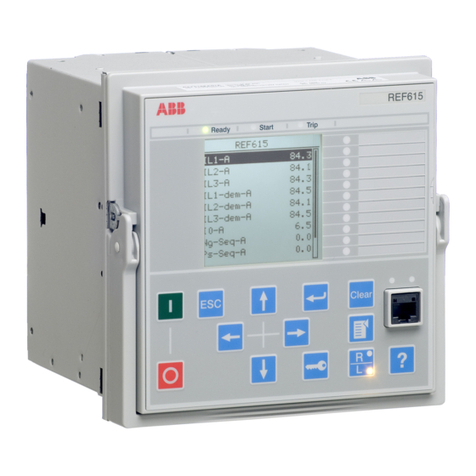LOVATO ELECTRIC PMVF52 User manual

I681 GB 12 23 31100514
1
LOVATO ELECTRIC S.P.A.
24020 GORLE (BERGAMO) ITALIA
VIA DON E. MAZZA, 12
TEL. 035 4282111
E-mail info@LovatoElectric.com
Web www.LovatoElectric.com
PMVF52
INTERFACE PROTECTION SYSTEM
Operating manual
GB
WARNING!
– Carefully read the manual before the installation or use.
– This equipment is to be installed by qualified personnel, complying to current standards, to avoid
damages or safety hazards.
– Before any maintenance operation on the device, remove all the voltages from measuring and supply inputs and short-
circuit the CT input terminals.
– The manufacturer cannot be held responsible for electrical safety in case of improper use of the equipment.
– Products illustrated herein are subject to alteration and changes without prior notice. Technical data and descriptions
in the documentation are accurate, to the best of our knowledge, but no liabilities for errors, omissions or
contingencies arising there from are accepted.
– A circuit breaker must be included in the electrical installation of the building. It must be installed close by the
equipment and within easy reach of the operator. It must be marked as the disconnecting device of the equipment:
IEC/EN/BS 61010-1 § 6.11.3.1.
– Clean the device with a soft dry cloth; do not use abrasives, liquid detergents or solvents.
ATTENZIONE!
– Leggere attentamente il manuale prima dell’utilizzo e l’installazione.
– Questi apparecchi devono essere installati da personale qualificato, nel rispetto delle vigenti normative
impiantistiche, allo scopo di evitare danni a persone o cose.
– Prima di qualsiasi intervento sullo strumento, togliere tensione dagli ingressi di misura e di alimentazione e
cortocircuitare i trasformatori di corrente.
– Il costruttore non si assume responsabilità in merito alla sicurezza elettrica in caso di utilizzo improprio del dispositivo.
– I prodotti descritti in questo documento sono suscettibili in qualsiasi momento di evoluzioni o di modifiche. Le
descrizioni ed i dati a catalogo non possono pertanto avere alcun valore contrattuale.
– Un interruttore o disgiuntore va compreso nell’impianto elettrico dell’edificio. Esso deve trovarsi in stretta vicinanza
dell’apparecchio ed essere facilmente raggiungibile da parte dell’operatore. Deve essere marchiato come il dispositivo
di interruzione dell’apparecchio: IEC/EN/BS 61010-1 § 6.11.3.1.
– Pulire l’apparecchio con panno morbido, non usare prodotti abrasivi, detergenti liquidi o solventi.
ATTENTION !
– Lire attentivement le manuel avant toute utilisation et installation.
– Ces appareils doivent être installés par un personnel qualifié, conformément aux normes en vigueur en
matière d'installations, afin d'éviter de causer des dommages à des personnes ou choses.
– Avant toute intervention sur l'instrument, mettre les entrées de mesure et d'alimentation hors tension et court-circuiter
les transformateurs de courant.
– Le constructeur n'assume aucune responsabilité quant à la sécurité électrique en cas d'utilisation impropre du
dispositif.
– Les produits décrits dans ce document sont susceptibles d'évoluer ou de subir des modifications à n'importe quel
moment. Les descriptions et caractéristiques techniques du catalogue ne peuvent donc avoir aucune valeur
contractuelle.
– Un interrupteur ou disjoncteur doit être inclus dans l'installation électrique du bâtiment. Celui-ci doit se trouver tout
près de l'appareil et l'opérateur doit pouvoir y accéder facilement. Il doit être marqué comme le dispositif
d'interruption de l'appareil : IEC/EN/BS 61010-1 § 6.11.3.1.
– Nettoyer l’appareil avec un chiffon doux, ne pas utiliser de produits abrasifs, détergents liquides ou solvants.
UWAGA!
– Przed uży iem i instala ją urządzenia należy uważnie prze zytać niniejszą instruk ję.
– W elu uniknię ia obrażeń osób lub uszkodzenia mienia tego typu urządzenia muszą być instalowane przez
wykwalifikowany personel, zgodnie z obowiązują ymi przepisami.
– Przed rozpo zę iem jaki hkolwiek pra na urządzeniu należy odłą zyć napię ie od wejść pomiarowy h i zasilania oraz zewrzeć
za iski przekładnika prądowego.
– Produ ent nie przyjmuje na siebie odpowiedzialnoś i za bezpie zeństwo elektry zne w przypadku niewłaś iwego użytkowania
urządzenia.
– Produkty opisane w niniejszym dokumen ie mogą być w każdej hwili udoskonalone lub zmodyfikowane. Opisy oraz dane
katalogowe nie mogą mieć w związku z tym żadnej wartoś i umownej.
– W instala ji elektry znej budynku należy uwzględnić przełą znik lub wyłą znik automaty zny. Powinien on znajdować się w
bliskim sąsiedztwie urządzenia i być łatwo osiągalny przez operatora. Musi być ozna zony jako urządzenie służą e do
wyłą zania urządzenia: IEC/EN/BS 61010-1 § 6.11.3.1.
– Urządzenie należy zyś ić miękką szmatką, nie stosować środkow ś ierny h, płynny h detergentow lub rozpusz zalnikow.
ACHTUNG!
– Dieses Handbuch vor Gebrauch und Installation aufmerksam lesen.
– Zur Vermeidung von Personen- und Sachschäden dürfen diese Geräte nur von qualifiziertem
Fachpersonal und unter Befolgung der einschlägigen Vorschriften installiert werden.
– Vor jedem Eingriff am Instrument die Spannungszufuhr zu den Messeingängen trennen und die Stromwandler
kurzschlieβen.
– Bei zweckwidrigem Gebrauch der Vorrichtung übernimmt der Hersteller keine Haftung für die elektrische Sicherheit.
– Die in dieser Broschüre beschriebenen Produkte können jederzeit weiterentwickelt und geändert werden. Die im
Katalog enthaltenen Beschreibungen und Daten sind daher unverbindlich und ohne Gewähr.
– In die elektrische Anlage des Gebäudes ist ein Ausschalter oder Trennschalter einzubauen. Dieser muss sich in
unmittelbarer Nähe des Geräts befinden und vom Bediener leicht zugänglich sein. Er muss als Trennvorrichtung für das
Gerät gekennzeichnet sein: IEC/EN/BS 61010-1 § 6.11.3.1.
– Das Gerät mit einem weichen Tuch reinigen, keine Scheuermittel, Flüssigreiniger oder Lösungsmittel verwenden.
ADVERTENCIA
– Leer atentamente el manual antes de instalar y utilizar el regulador.
– Este dispositivo debe ser instalado por personal cualificado conforme a la normativa de instalación
vigente a fin de evitar daños personales o materiales.
– Antes de realizar cualquier operación en el dispositivo, desconectar la tensión de las entradas de alimentación y
medida, y cortocircuitar los transformadores de corriente.
– El fabricante no se responsabilizará de la seguridad eléctrica en caso de que el dispositivo no se utilice de forma
adecuada.
– Los productos descritos en este documento se pueden actualizar o modificar en cualquier momento. Por consiguiente,
las descripciones y los datos técnicos aquí contenidos no tienen valor contractual.
– La instalación eléctrica del edificio debe disponer de un interruptor o disyuntor. Éste debe encontrarse cerca del
dispositivo, en un lugar al que el usuario pueda acceder con facilidad. Además, debe llevar el mismo marcado que el
interruptor del dispositivo (IEC/EN/BS 61010-1 § 6.11.3.1).
– Limpiar el dispositivo con un trapo suave; no utilizar productos abrasivos, detergentes líquidos ni disolventes.
ПРЕДУПРЕЖДЕНИЕ!
– Прежде чем приступать к монтажу или эксплуатации устройства, внимательно ознакомьтесь с одержанием
настоящего руководства.
– Во избежание травм или материального ущерба монтаж должен существляться только квалифицированным персоналом
в соответствии с действующими нормативами.
– Перед проведением любых работ по техническому обслуживанию устройства необходимо обесточить все
измерительные и питающие входные контакты, а также замкнуть накоротко входные контакты трансформатора тока (ТТ).
– Производитель не несет ответственность за обеспечение электробезопасности в случае ненадлежащего использования
устройства.
– Изделия, описанные в настоящем документе, в любой момент могут подвергнуться изменениям или
усовершенствованиям. Поэтому каталожные данные и описания не могут рассматриваться как действительные с точки
зрения контрактов
– Электрическая сеть здания должна быть оснащена автоматическим выключателем, который должен быть расположен
вблизи оборудования в пределах доступа оператора. Автоматический выключатель должен быть промаркирован как
отключающее устройство оборудования: IEC/EN/BS 61010-1 § 6.11.3.1.
– Очистку устройства производить с помощью мягкой сухой ткани, без применения абразивных материалов, жидких
моющих средств или растворителей.
UPOZORNĚNÍ
– Návod se pozorně pročtěte, než začnete regulátor instalovat a používat.
– Tato zařízení smí instalovat kvalifikovaní pra ovní i v souladu s platnými předpisy a normami pro před házení
úrazů osob či poškození vě í.
– Před jakýmkoli zásahem do přístroje odpojte měři í a napáje í vstupy od napětí a zkratujte transformátory proudu.
– Výrob e nenese odpovědnost za elektri kou bezpečnost v případě nevhodného používání regulátoru.
– Výrobky popsané v tomto dokumentu mohou kdykoli projít úpravami či dalším vývojem. Popisy a údaje uvedené v katalogu
nemají proto žádnou smluvní hodnotu.
– Spínač či odpojovač je nutno zabudovat do elektri kého rozvodu v budově. Musejí být nainstalované v těsné blízkosti přístroje a
snadno dostupné pra ovníku obsluhy. Je nutno ho označit jako vypína í zařízení přístroje: IEC/EN/BS 61010-1 § 6.11.3.1.
– Přístroj čistěte měkkou utěrkou, nepoužívejte abrazivní produkty, tekutá čistidla či rozpouštědla.
DİKKAT!
– Montaj ve kullanımdan ön e bu el kitabını dikkatli e okuyunuz.
– Bu aparatlar kişilere veya nesnelere zarar verme ihtimaline karşı yürürlükte olan sistem kurma normlarına göre
kalifiye personel tarafından monte edilmelidirler
– Aparata ( ihaz) herhangi bir müdahalede bulunmadan ön e ölçüm girişlerindeki gerilimi kesip akım transformatörlerinede kısa
devre yaptırınız.
– Üreti i aparatın hatalı kullanımından kaynaklanan elektriksel güvenliğe ait sorumluluk kabul etmez.
– Bu dokümanda tarif edilen ürünler her an evrimlere veya değişimlere açıktır. Bu sebeple katalogdaki tarif ve değerler herhangi bir
bağlayı ı değeri haiz değildir.
– Binanın elektrik sisteminde bir anahtar veya şalter bulunmalıdır. Bu anahtar veya şalter operatörün kolaylıkla ulaşabile eği yakın
bir yerde olmalıdır. Aparatı ( ihaz) devreden çıkartma görevi yapan bu anahtar veya şalterin markası:
IEC/EN/BS 61010-1 § 6.11.3.1.
– Aparatı ( ihaz) sıvı deterjan veya solvent kullanarak yumuşak bir bez ile siliniz aşındırı ı temizlik ürünleri kullanmayınız.
AVERTIZARE!
– Citiţi u atenţie manualul înainte de instalare sau utilizare.
– A est e hipament va fi instalat de personal alifi at, în onformitate u standardele a tuale, pentru a evita
deteriorări sau peri olele.
– Înainte de efe tuarea ori ărei operaţiuni de întreţinere asupra dispozitivului, îndepărtaţi toate tensiunile de la intrările de
măsurare şi de alimentare şi s urt ir uitaţi bornele de intrare CT.
– Produ ătorul nu poate fi onsiderat responsabil pentru siguranţa ele tri ă în az de utilizare in ore tă a e hipamentului.
– Produsele ilustrate în prezentul sunt supuse modifi ărilor şi s himbărilor fără notifi are anterioară. Datele tehni e şi des rierile
din do umentaţie sunt pre ise, în măsura unoştinţelor noastre, dar nu se a eptă ni io răspundere pentru erorile, omiterile sau
evenimentele neprevăzute are apar a urmare a a estora.
– Trebuie in lus un disjun tor în instalaţia ele tri ă a lădirii. A esta trebuie instalat aproape de e hipament şi într-o zonă uşor
a esibilă operatorului. A esta trebuie mar at a fiind dispozitivul de de one tare al e hipamentului:
IEC/EN/BS 61010-1 § 6.11.3.1.
– Curăţaţi instrumentul u un material textil moale şi us at; nu utilizaţi substanţe abrazive, detergenţi li hizi sau solvenţi.
UPOZORENJE!
– Prije instala ije ili korištenja uređaja, pažljivo pročitajte upute.
– Ovaj uređaj mora instalirati, u skladu s važećim normama, obučena osoba kako bi se izbjegle štete ili sigurnosne
opasnosti.
– Prije bilo kakvog zahvata na uređaju otpojite napajanje s mjernih i napajajućih ulaza i kratko spojite ulazne stezaljke strujnog
transformatora.
– Proizvođač ne snosi odgovornost za električnu sigurnost u slučaju nepravilnog korištenja opreme.
– Ovdje prikazan uređaj predmet je stalnog usavršavanja i promjena bez prethodne najave. Tehnički poda i i opisi u ovim uputama
su točni, ali ne preuzimamo odgovornost za možebitne nenamjerne greške.
– U električnu instala iju zgrade mora biti instaliran prekidač. On mora biti instaliran blizu uređaja i na dohvat ruke operatera, te
označen kao rastavljač u skladu s normom IEC/EN/BS 61010-1 § 6.11.3.1
– Uređaj čistite s mekom, suhom krpom bez primjene abraziva, tekućina, otapala ili deterdženta.

I681 GB 12 23 31100514
2
INTRODUCTION
The PMVF52 equipment has been designed as an Interface Protection System (SPI) in accordance with the CEI 0-21 standard.
It can be applied to all LV micro-generation systems (photovoltaic, wind) where it is used to control the Interface Switch (IS) between generation system and public grid.
In the event of problems on the grid (e.g. due to maintenance), the system intervenes in a timely fashion, opening the Interface Switch (e.g. contactor) and isolating the generation system.
In the event of Interface Switch (IS) failure, it can also control a backup device to disconnect the generation system in any case.
The equipment features 5 digital inputs permitting the connection of the system to the signals provided by the network operator to meet the requirements of the current regulations.
The functions implemented and the possibility of further expansion ensure that it is prepared for any developments to the protection system.
The PMVF52 equipment is supplied already programmed and assembled. With the factory settings, once the connections have been made, it is already ready for operation in compliance with the requirements of the
CEI without requiring any further settings to be made. It is nevertheless prepared for any future changes to the operating parameters. Changes to the settings are password protected, preventing tampering by
unauthorised personnel.
DESCRIPTION
– Modular construction for DIN rail, 4 units.
– LCD graphic 128x80 pixel, backlit, 4 grey levels.
– 4 display and setting buttons.
– Voltage measuring inputs three-phase + neutral.
– Possibility of operation in the following line configurations:
•
three-phase with neutral, VL-L voltage controls (default)
•
three-phase with neutral, VL-N voltage controls
•
three-phase without neutral, VL-L voltage controls
•
single-phase, VL-N voltage control.
– 2 switching-relay outputs and 1NO output (OUT3) to control:
•
OUT1: IS (Interface Switch) coil control
•
OUT2: Backup device control
•
OUT3: Global alarm (programmable).
– 5 contact digital inputs for:
•
INP1: IS feedback input (auxiliary closure indication contact)
•
INP2: local control input
•
INP3: remote frequency threshold selection input (external signal)
•
INP4: remote tripping control input
•
INP5: programmable (default OFF).
– Settings lock via 2-level changeable password.
– Setup for future installation of IEC/EN/BS 61850 interface module.
– Possibility to have 2 multifunction programmable outputs (OUT4 and OUT5) and 2 multifunction programmable inputs (INP6 and INP7) on additional EXM1001 expansion module.
TRIP THRESHOLDS
– Below are the voltage and frequency trip thresholds for which the equipment is Setup according to the factory defaults, which correspond to the default requirements of the CEI 0-21 standard.
CONTENTS Page
Introduction . . . . . . . . . . . . . . . . . . . . . . . . . . . . . . . . . . . . . . . . . . . . . . . . . . . . . . . . . . . . . . . . . . . . 2
Description . . . . . . . . . . . . . . . . . . . . . . . . . . . . . . . . . . . . . . . . . . . . . . . . . . . . . . . . . . . . . . . . . . . . . 2
Trip thresholds . . . . . . . . . . . . . . . . . . . . . . . . . . . . . . . . . . . . . . . . . . . . . . . . . . . . . . . . . . . . . . . . . . 2
Front button functions . . . . . . . . . . . . . . . . . . . . . . . . . . . . . . . . . . . . . . . . . . . . . . . . . . . . . . . . . . . . 3
Displaying measurements . . . . . . . . . . . . . . . . . . . . . . . . . . . . . . . . . . . . . . . . . . . . . . . . . . . . . . . . . . 3
Table of display pages . . . . . . . . . . . . . . . . . . . . . . . . . . . . . . . . . . . . . . . . . . . . . . . . . . . . . . . . . . . . . 4
Main Menu . . . . . . . . . . . . . . . . . . . . . . . . . . . . . . . . . . . . . . . . . . . . . . . . . . . . . . . . . . . . . . . . . . . . . 4
Password-protected access . . . . . . . . . . . . . . . . . . . . . . . . . . . . . . . . . . . . . . . . . . . . . . . . . . . . . . . . 5
Setting parameters (Setup) . . . . . . . . . . . . . . . . . . . . . . . . . . . . . . . . . . . . . . . . . . . . . . . . . . . . . . . . . 5
Parameter table . . . . . . . . . . . . . . . . . . . . . . . . . . . . . . . . . . . . . . . . . . . . . . . . . . . . . . . . . . . . . . . . . . 6
Page
Commands Menu . . . . . . . . . . . . . . . . . . . . . . . . . . . . . . . . . . . . . . . . . . . . . . . . . . . . . . . . . . . . . . . . 8
Alarm indications . . . . . . . . . . . . . . . . . . . . . . . . . . . . . . . . . . . . . . . . . . . . . . . . . . . . . . . . . . . . . . . . 9
Self-diagnosis . . . . . . . . . . . . . . . . . . . . . . . . . . . . . . . . . . . . . . . . . . . . . . . . . . . . . . . . . . . . . . . . . . . 9
Communication . . . . . . . . . . . . . . . . . . . . . . . . . . . . . . . . . . . . . . . . . . . . . . . . . . . . . . . . . . . . . . . . . . 9
Wiring diagrams . . . . . . . . . . . . . . . . . . . . . . . . . . . . . . . . . . . . . . . . . . . . . . . . . . . . . . . . . . . . . . . . . 10
Backup activation modes . . . . . . . . . . . . . . . . . . . . . . . . . . . . . . . . . . . . . . . . . . . . . . . . . . . . . . . . . . 11
Terminal layout . . . . . . . . . . . . . . . . . . . . . . . . . . . . . . . . . . . . . . . . . . . . . . . . . . . . . . . . . . . . . . . . . . 11
Mechanical dimensions . . . . . . . . . . . . . . . . . . . . . . . . . . . . . . . . . . . . . . . . . . . . . . . . . . . . . . . . . . . . 11
Technical characteristics . . . . . . . . . . . . . . . . . . . . . . . . . . . . . . . . . . . . . . . . . . . . . . . . . . . . . . . . . . . 12
Voltage measurement type Voltage threshold Default Type Trip Trip delay Default
INSTANTANEOUS V > 59.S2 V > 115% MAX YES DEL 59.S2 0.20s
MOVING AVERAGE 10min Vmed > 59.S1 Vmed > 110% MAX YES DEL 59.S1 3.00s
INSTANTANEOUS 27.S1 <= V <= 59.S1 85% <= V <= 110% OK NO -- --
INSTANTANEOUS 27.S2 <= V < 27.S1 15% <= V < 85% MIN YES DEL 27.S1 1.50s
INSTANTANEOUS V < 27.S2 V < 15% MIN YES DEL 27.S2 0.20s
External Local Control MIN F Default MIN F Default MAX F Default MAX F Default
signal threshold delay threshold delay
ON OFF 81<.S2 47.50Hz DEL C MIN F 0.10s 81>.S2 51.50Hz DEL C MAX F 0.10s
OFF ON 81<.S2 47.50Hz DEL L MIN F 4.00s 81>.S2 51.50Hz DEL L MAX F 1.00s
ON ON 81<.S1 49.80Hz DEL C MIN F 0.10s 81>.S1 50.20Hz DEL C MAX F 0.10s
– The frequency thresholds and corresponding delays may vary in accordance with the state of the input signals named Local Control and External Signal.
– A condition with both signals OFF is not envisaged/defined. Should it occur, the equipment will provide an alarm indication.
– The table indicating trip thresholds and times in the conditions envisaged follows:

I681 GB 12 23 31100514
3
– The thresholds used during SPI operation and the corresponding delays are displayed in a dedicated video page:
Delays on the active
voltage thresholds
Value of the
active voltage
thresholds
Value of the active
frequency thresholds
Abbreviation for the
protection functions
Delays on the active
frequency thresholds
Active frequency
thresholds marker
Frequency measured
in hertz
Voltages measured
in volts
Graphic bars
and % value of
the voltages
Graphic bars
and % value of
the frequency
Active voltage
thresholds marker
Note: for field testing of the thresholds via relay test kit, an Application Notes document has been drawn up containing useful information and suggestions for system installers and inspectors. The document can be
requested from our Technical support (Tel. + 39 035 4282422; E-mail: [email protected]).
FRONT BUTTON FUNCTIONS
MENU button - Used to enter or exit the various display and Setup menus.
Buttons
s
and
t
- Used to scroll between screens, select from available options on the display and change (increase/decrease) settings.
Button ✔- Used to scroll sub-pages, confirm selected options and switch between display modes.
DISPLAYING MEASUREMENTS
– The
s
and
t
buttons allow the measurement display pages to be scrolled one at a time. The current page is shown on the title bar.
– The first page displayed (main page) contains all the most important information in both numerical and graphical form. The limit thresholds are indicated by a small marker above the graphic bar, while the arrows
under the graphic bar indicate the measurement range (HI – LO).
Example of main page
State of signals
to SPI (inputs)
IS control
output state
IS feedback
input state
General SPI state:
‘OK’ if IS and B-up active,
otherwide ‘TRIP’
Backup control output
state (visible if enabled)
– The next page displays an overview of the state of the Interface Protection System, showing both the state of the outputs to the IS and backup and the state of the control inputs. The black arrows indicate an active
state, the grey ones an inactive state.
IS / Backup /
Intertripping trip count
SPI trip hour
counter
Voltage threshoulds
trip count
Frequency threshoulds
trip count
– Three pages with trip protection counters follow, divided into total trip count, voltage threshold trip count and frequency threshold trip count.
The counters can be reset through the Commands Menu.
Measurement Phase indication
Unit of
measurement
Sub-page
indication
– In the pages that follow these pages, on the other hand, the measurements are in standard numerical format.
– Some measurements may not be displayed, depending on the programming and the connection for the device (for example, if programmed for a system without neutral, the measurements relating to neutral are
not displayed).
SPI overview page
Example of page with numerical indications

I681 GB 12 23 31100514
4
– For many pages, the ✔button permits access to sub-pages (for example, to display the maximum and minimum values recorded).
– The sub-page displayed currently is indicated at the bottom left by one of the following icons:
•
IN = instantaneous value – Current instantaneous value of the measurement, displayed by default every time the page is changed
•
HI = maximum instantaneous value – Highest value measured by the SPI for the corresponding measurement. HIGH values are stored and preserved even in the absence of a power supply. They can be reset
through a dedicated command (see COMMANDS MENU on page 8)
•
AV = average value – Average value of the measurements, with slowed variations (average of the last minute)
•
LO = minimum instantaneous value – Lowest value measured by the SPI from the moment voltage is applied. It is reset with the same command used for the HI values
•
GR = graphic bars – Display of measurements through graphic bars.
– The user can specify the page and sub-page to return to automatically after no buttons have been pressed for a given time.
– It is also possible to program the PMVF52 so that the display always remains that which was last selected.
– For the Setup of these functions, see MENU M02 – UTILITY on page 7.
TABLE OF DISPLAY PAGES
No. Selection via
s
and
t
Selection via ✔
PAGES SUB-PAGES
1 VOLTAGES, FREQUENCY HI LO AV GR
V(L1-L2), V(L2-L3), V(L3-L1), F(Hz)
2 SPI STATE OVERVIEW
STATE OF IS/BACKUP CONTROL OUTPUTS, FEEDBACK INPUTS, EXTERNAL SIGNAL, INTERTRIPPING
3 ACTIVE THRESHOLDS DELAYS IN USE
V/F THRESHOLDS AND DELAYS CURRENTLY ACTIVE
4 SPI TRIP COUNTER
IS TRIP CNT, BACKUP TRIP CNT
5 VOLTAGE THRESHOLD TRIP COUNTERS
CNT 59.S2,CNT 59.S1,CNT 27.S1,CNT 59.S2
6 FREQUENCY THRESHOLD TRIP COUNTERS
CNT 81>.S2, CNT 81>.S1, CNT 81<.S1, CNT 81<.S2
7 PHASE-TO-PHASE VOLTAGES HI LO AV GR
V(L1-L2), V(L2-L3), V(L3-L1), V(LL)EQV
8 PHASE-TO-NEUTRAL VOLTAGES HI LO AV GR
V(L1-N), V(L2-N), V(L3-N), V(L-N)EQV
9 MOVING AVERAGE VOLTAGE HI LO
VM(L1-L2), VM(L2-L3), VM(L3-L1)
10 INPUTS STATUS
11 OUTPUTS STATUS
12 EVENTS LOG
13 EXPANSION MODULES
14 INFO-REVISION-SERIAL NO.
MODEL, REV SW, REV HW, SER. No.
15 LOGO
– Note: the moving average voltage measurement is not available for the first 10 minutes after switching on or resetting the system. During this time, dashes and a countdown indicating the time left before
measurement display are shown.
MAIN MENU
– The main menu consists of a set of graphic icons which allow rapid access to measurements and settings.
– Starting from the normal measurement display, press the MENU button. The display shows the quick menu (see figure below).
– Press
s
or
t
to select the desired function. The selected icon is highlighted and the message in the middle of the display indicates the description of the function.
– Press ✔to activate the selected function.
– If some functions are not available, the corresponding icon will be deactivated, i.e. greyed out.
– etc. - Operate as shortcuts which allow quicker access to pages for displaying measurements, going directly to the selected group of measurements, from which it is possible to move
forwards and backwards as usual.
– – Setting the numeric code which permits access to protected functions (setting parameters, executing commands).
– – Parameter programming access point. See the Setting Parameters (Setup) section on page 5.
– – Commands Menu access point, where authorised users can perform a number of resetting and restoring operations.
Voltages
Voltage moving
average
Inputs status
Outputs status
Event log
Information
page
Setup menu
Commands menu
Password SPI measurements/
thresholds SPI overview
Trip
counters

I681 GB 12 23 31100514
5
PASSWORD-PROTECTED ACCESS
– For new (default) equipment, the password is enabled with the default 1000 (user access) and 2000 (advanced access) codes.
– To modify the access codes, refer to the Setting Parameters (Setup) section on page 5.
– There are two access levels, depending on the code entered:
•
User-level access – Permits resetting of the recorded values and the display, but not changing, of the equipment’s settings.
•
Advanced-level access – The same rights as user, with the addition of being able to change the settings.
– In the normal measurements display, press MENU to recall the main menu, then select the password icon and press ✔.
– The password setting window shown below will appear:
– Press the
st
buttons to change the value of the selected digit.
– Press the ✔button to confirm the digit and cycle to the next ones.
– Enter the password, then go to the key icon.
– When the password entered corresponds to the User-level or Advanced-level password, the appropriate unlock message appears.
– After the password is unlocked, access will remain enabled until:
•
the equipment is disconnected
•
the equipment is reset after exiting the Setting Parameters (Setup) menu
•
2 minutes elapse without the operator touching any button.
– Pess the MENU button to stop setting the password and exit.
SETTING PARAMETERS (SETUP)
– From the standard measurement display, press MENU to call up the main menu, then select the icon and press ✔to access the Setting Parameters (Setup) menu.
– The table in the figure is displayed, for selecting the Setup sub-menus, in which all the parameters are grouped according to their function.
– Press the
s t
buttons to select the desired menu and press ✔ to confirm.
– Press MENU to exit and return to the measurement display.
– The available sub-menus are listed in the following table:
CODE MENU DESCRIPTION
M01 GENERAL Specifications of the system
M02 UTILITY Language, brightness, display pages, etc.
M03 PASSWORD Enablement of protected access
M04 SPI THRESHOLDS SPI trip thresholds and delays
M05 COMMUNICATION (COM) Communication ports
M06 ALARMS Alarm enablement
– Select the sub-menu and press the ✔button to display the parameters.
– All parameters are displayed with code, description, current value.
Parameter
code
Current value
Parameter
description
Parameter
selected
Setup: parameter selection
– To change the value of a parameter, select it then press ✔.
– If the Advanced-level password has not been entered, it will not be possible to access the modification page, and an access denied message will be displayed.
– If access has been granted, on the other hand, the modification page will be displayed.
– In modification mode, the value can be changed with the
s
and
t
buttons. Also displayed are a graphic bar indicating the setting range, the minimum and maximum values possible, the previous value and the
default value.
– Pressing
s
and
t
simultaneously restores the factory default value.
– Press MENU to return to parameter selection. The value entered is stored.
– Press MENU again to save the changes and exit Setup. The SPI resets and resumes normal operation.
ATTENTION: when restarting following a change to the parameters or commands, the output relays are temporarily de-energised.
– If no buttons are pressed for 2 minutes, the Setup menu is abandoned automatically and the SPI returns to the standard display.
Factory default
value
Parameter
selected New value set
Minimum
possible value
Value-range
graphic bar
Maximum
possible value
Setup: modification page

I681 GB 12 23 31100514
6
PARAMETER TABLE
M01 - GENERAL UoM Default Range
P01.01 Nominal Voltage V 400 100-480
P01.02 Voltage connection / control Three-phase+N / VLL Three-phase+N / VL-L
Three-phase+N / VL-N
Three-phase / VL-L
Single-phase / VL-N
P01.03 IS activation delay time after switching on SPI s 4.00 4.00 – 300.00
P01.04 OUT3 output function Global Alarm OFF
IS
BACKUP
Global Alarm
Threshold 59.S1
Threshold 59.S2
Threshold 27.S1
Threshold 27.S2
Threshold 81>.S1
Threshold 81>.S2
Threshold 81<.S1
Threshold 81<.S2
Alarm A01
Alarm A02
Alarm A03
Alarm A04
Alarm A05
Alarm A06
P01.05 OUT4 output function OFF OFF
IS
BACKUP
Global Alarm
Threshold 59.S1
Threshold 59.S2
Threshold 27.S1
Threshold 27.S2
Threshold 81>.S1
Threshold 81>.S2
Threshold 81<.S1
Threshold 81<.S2
Alarm A01
Alarm A02
Alarm A03
Alarm A04
Alarm A05
Alarm A06
P01.06 OUT5 output function OFF OFF
IS
BACKUP
Global Alarm
Threshold 59.S1
Threshold 59.S2
Threshold 27.S1
Threshold 27.S2
Threshold 81>.S1
Threshold 81>.S2
Threshold 81<.S1
Threshold 81<.S2
Alarm A01
Alarm A02
Alarm A03
Alarm A04
Alarm A05
Alarm A06
P01.07 INP5 input function OFF OFF
Feedback Backup
Inhibition
Remote tripping
C01 command
C02 command
Autotest (C16)
P01.08 INP6 input function OFF OFF
Feedback Backup
Inhibition
Remote tripping
C01 command
C02 command
Autotest (C16)
P01.09 INP7 input function OFF OFF
Feedback Backup
Inhibition
Remote tripping
C01 command
C02 command2
Autotest (C16)

I681 GB 12 23 31100514
7
P01.10 Backup command mode MODE A OFF
MODE A
MODE B
MODE C
P01.11 Backup control pulse duration s 3.0 1.0 - 60.0
P01.12 Normal state remote tripping NOR NOR - REV
P01.13 Normal state IS feedback NOR NOR - REV
P01.14 Normal state backup feedback NOR NOR - REV
P01.01 – Nominal voltage of the system. For a system with VL-L voltage control set line voltage, for a system with VL-N voltage control set phase voltage.
P01.02 – Type of connection and type of voltage control. Program in line with the wiring.
P01.03 – IS energising delay time after applying voltage to PMVF52.
P01.04 – Defines the function of the OUT3 output from those listed. The output is understood to be activated when conditions are normal (threshold not exceeded, alarm not active, etc.).
P01.05 – Defines the function of the OUT4 output (on EXM module, if mounted) from those listed. The output is understood to be activated when conditions are normal (threshold not exceeded, alarm not active, etc.).
P01.06 – Defines the function of the OUT5 output (on EXM module, if mounted) from those listed. The output is understood to be activated when conditions are normal (threshold not exceeded, alarm not active, etc.).
P01.07 – Defines the function of the INP5 input from those listed.
P01.08 – Defines the function of the INP6 input (on EXM module, if mounted) from those listed.
P01.09 – Defines the function of the INP7 input (on EXM module, if mounted) from those listed.
P01.10 – Defines the backup control mode, according to the logic in the Backup Activation Modes diagram on the final pages of this manual. If the backup is not used, set to OFF.
P01.11 – Backup opening pulse duration, when used in MODE C.
P01.12 – Defines the logic of normal status of the remote tripping if normal (NOR) or inverted (REV) with respect to the contact. For compliance with CEI 0-21 use NOR.
P01.13 – Defines the logic of normal status of the IS feedback if normal (NOR) or inverted (REV) with respect to the contact. For compliance with CEI 0-21 use NOR.
P01.14 – Defines the logic of normal status of the backup feedback if normal (NOR) or inverted (REV) with respect to the contact. For compliance with CEI 0-21 use NOR.
P02.06 – If set to OFF, the display always remains on the page where the user left it. If set to a value, after this time the display returns to the page set with P02.07.
P02.07 – Abbreviation for the start page on switching on and that the display returns to automatically once the time P02.06 since a button was last pressed has elapsed.
P02.08 – Type of sub-page that the display returns to after P02.06 has elapsed.
M02 – UTILITY UoM Default Range
P02.01 Language Italiano English
Italiano
P02.02 LCD contrast % 60 0-100
P02.03 Display backlighting intensity HIGH % 100 0-100
P02.04 Display backlighting intensity LOW % 30 0-50
P02.05 Low backlight delay s 30 5-600
P02.06 Default page return s 60 OFF / 10-600
P02.07 Default page SPI measurements SPI – SYN – EVE ...
P02.08 Default sub-page GR IN / HI / LO / AV / GR
P02.09 Display update time s 0.5 0.1 – 5.0
P03.01 – If set to OFF, password management is disabled.
P03.02 – With P03.01 active, value to specify to activate user-level access. See Password-Protected Access section on page 5.
P03.03 – As P03.02, with reference to Advanced-level access.
M03 – PASSWORD UoM Default Range
P03.01 Enable passwords ON OFF-ON
P03.02 User-level password 1000 0-9999
P03.03 Advanced-level password 2000 0-9999
P04.01...P04.16 – Adjustment of trip thresholds and delay times defined by the CEI 0-21 standard.
P04.17 – Maximum IS opening waiting time, before IS locking is recognised with consequent backup opening command.
P04.18 – Local control setting via parameter. Operates in OR with the input of the corresponding function.
P04.19 – IS restore (reset) time. IS reclosing delay time after all thresholds are ok again.
M04 –SPI THRESHOLDS UoM Default Range
P04.01 MAX V threshold 59.S2 % 115 100 - 130
P04.02 MAX V threshold 59.S1 % 110 100 - 120
P04.03 MIN V threshold 27.S1 % 85 20 - 100
P04.04 MIN V threshold 27.S2 % 15 5 - 100
P04.05 MAX V delay 59.S2 s 0.20 0.05 - 5.00
P04.06 MAX V delay 59.S1 s 3.00 0.20 - 10.00
P04.07 MIN V delay 27.S1 s 1.5 0.05 - 5.00
P04.08 MIN V delay 27.S2 s 0.20 0.05 - 5.00
P04.09 MAX F threshold 81>.S2 Hz 51.50 50.0 - 52.0
P04.10 MAX F threshold 81>.S1 Hz 50.20 50.0 - 52.0
P04.11 MIN F threshold 81<.S1 Hz 49.80 47.0 - 50.0
P04.12 MIN F threshold 81<.S2 Hz 47.50 47.0 - 50.0
P04.13 Long MAX F delay s 1.00 0.05 - 5.00
P04.14 Short MAX F delay s 0.10 0.05 - 5.00
P04.15 Short MIN F delay s 0.10 0.05 - 5.00
P04.16 Long MIN F delay s 4.00 0.05 - 5.00
P04.17 Backup activation delay s 0.5 0.1 – 10.0
P04.18 Local control OFF OFF - ON
P04.19 SPI restore time (reset) s 0.08 0.04 – 300.00

I681 GB 12 23 31100514
8
P05.01 – Serial address (node) for the communication protocol.
P05.02 – Communication port bitrate.
P05.03 – Data format. 7 bit setting position for ASCII protocol only.
P05.04 – Number of stop bits.
P05.05 – Communication protocol selection.
P05.06, P05.07, P05.08 – TCP-IP details for applications with Ethernet interface. Not used with other communication module types.
P05.09 – Activation of TCP-IP connection.
Server: waits for connection from a remote client.
Client: connection to a remote server at the address specified by P05.10.
P05.10, P05.11 – Coordinates for the connection to the remote server when P05.09 is set to client.
P05.12 – IP address of network gateway, if it is present.
M05 – COMMUNICATION UoM Default Range
P05.01 Serial node address 01 01-255
P05.02 Serial speed bps 9600 1200
2400
4800
9600
19200
38400
P05.03 Data format 8 bit – n 8 bit, no parity
8 bit, odd
8bit, even
7 bit, odd
7 bit, even
P05.04 Stop bits 1 1-2
P05.05 Protocol Modbus-RTU Modbus-RTU
Modbus-ASCII
Modbus-TCP
P05.06 IP address 192.168.001.001 000.000.000.000 -
255.255.255.255
P05.07 Subnet mask 255.255.255.000 000.000.000.000 -
255.255.255.255
P05.08 IP port 502 0-32000
P05.09 Client/Server Server Client-Server
P05.10 Remote IP address 000.000.000.000 000.000.000.000 -
255.255.255.255
P05.11 Remote IP port 1001 0-32000
P05.12 Gateway IP address 000.000.000.000 000.000.000.000 -
255.255.255.255
P06.01...P06.06 – Enables or disables the corresponding alarm.
Note: the use of the auxiliary feedback contact on the IS is recommended even in applications where the backup device is not used. If not even the feedback contact is used however, it will be necessary to deactivate
alarm A03 by setting P06.03 to OFF.
M06 – ALARMS UoM Default Range
P06.01 Alarm A01 enablement ON ON - OFF
P06.02 Alarm A02 enablement ON ON - OFF
P06.03 Alarm A03 enablement ON ON - OFF
P06.04 Alarm A04 enablement OFF ON - OFF
P06.05 Alarm A05 enablement OFF ON - OFF
P06.06 Alarm A06 enablement ON ON - OFF
COMMANDS MENU
– The Commands Menu is used to perform occasional operations, like resetting measurements, counters, alarms, etc.
– If the Advanced-level access password was entered, the Commands Menu can also be used to perform automatic operations useful for configuring the instrument.
– The following table shows the functions which are available with the Commands Menu, divided according to the required access level.
CODE COMMAND ACCESS DESCRIPTION
LEVEL
C.01 RESET HI-LO User / Advanced Resets the HI and LO values of all measurements
C.02 RESET TRIP COUNTERS User / Advanced Resets the trip counters
C.12 PARAMETERS TO DEFAULT Advanced Restores all settings to factory default values
C.13 PARAMETER BACKUP Advanced Saves a backup copy of the settings
C.14 PARAMETERS RESTORE Advanced Reloads the settings from the backup copy
C.15 TEST THRESHOLD 27.S2 Advanced Temporarily shifts threshold 27.S1 to permit testing of threshold 27.S2 ∂.
C.16 AUTOTEST Advanced PMVF52 performs the self-test function according to the procedure described in the standard
C.17 RESET EVENTS LOG Advanced Reset of events log
C.18 ALARM INHIBITION Advanced Temporarily disables alarms A02 to A05 ∑.
∂ The purpose of command C.15 is to permit testing of threshold 27.S2 via relay test kit. This threshold is normally “covered” by 27.S1 and consequently cannot be tested according to the procedures
indicated by the standard. Giving this command sets threshold 27.S1 temporarily to the minimum permitted value (20% Un), lower than the default value of 27.S2 (40%Un) so as to permit it to be tested.
This shift in the threshold lasts for a maximum of 5 minutes, during which the shifted value is visible on the Active Thresholds page. Switching the PMVF52 off then on or waiting for the period to elapse
(sufficient for performing the test) brings threshold 27.S1 back to its normal set value.
∑ The purpose of command C.18 is to temporarily disable the alarms A02-A05 to facilitate the initial commissioning phase, without having to disconnect the PMVF52 each time.
Disabling lasts up to 120 min. and is canceled by switching off the device.
The count can be viewed on the synoptic page.

I681 GB 12 23 31100514
9
ALARM INDICATIONS
– In the event of an anomaly, the PMVF52 indicates the situation with a pop-up window.
– If the user presses buttons on the front, the alarm is hidden temporarily to permit consultation of the screens.
– The alarm remains while the anomaly is present.
– All the alarms/warnings except A01 are retentive, i.e. they reset when the anomaly ceases and after having disconnected and subsequently powered up the device again. Retentive alarms always open the
OUT1 IS output.
ATTENTION: If the autotest is performed and it has a negative outcome, it will show the relevant alarm A06. This alarm is retentive and it’s not reset until the autotest is successfully passed.
– In the presence of a non-retentive alarm, the equipment continues to operate in any case.
– Exit OUT3, OUT4 and OUT5 can be programmed to indicate the presence of any alarm (global alarm function).
SELF-DIAGNOSIS
– The PMVF52 features a series of self-diagnosis checks. If any of these checks is unsuccessful, a window displaying the text System Error Exx is displayed, where xx indicates the reason for malfunction.
Should this indication occur, contact our Technical support (Tel. + 39 035 4282422; E-mail: [email protected]), stating the code indicated.
CODE ALARM / INDICATION DESCRIPTION / POSSIBLE CAUSES
A01 EXTERNAL SIGNAL / LOCAL CONTROL COMBINATION NOT PERMITTED External Signal and Local Control both OFF (combination not envisaged by the standard). The Local Control must be
ON (shunted) if required by the operating regulations.
If the Local Control is OFF, then the External Signal must be ON.
A02 IS OPENING FAILURE The SPI sends the opening command to the IS, but the auxiliary (feedback) contact is closed, so the SPI sends an
opening command to the backup.
Check the operation of the IS and of its auxiliary (feedback) contact.
A03 IS CLOSING FAILURE – The SPI has ordered the closing of the IS but it does not close (check OUT1 wiring and/or IS coil).
– The auxiliary IS contact (feedback) is not working.
– The auxiliary IS contact (feedback) is not connected correctly to terminal INP1.
– The auxiliary IS contact (feedback) is not fitted since it is not envisaged in the scheme.
Disable alarm A03 by setting P06.03 to OFF.
Note: LOVATO Electric recommends the use of the feedback input.
A04 BACKUP OPENING FAILURE The IP sends the opening command to the back-up but the auxiliary contact (feedback) is closed.
Check the functionality of the support and its auxiliary contact (feedback).
A05 BACKUP CLOSING FAILURE The IP has commanded the closing of the backup but it does not close (check wiring OUT1 and / or IS coil).
– The auxiliary contact of the backup (feedback) does not work.
– The auxiliary contact of the backup (feedback) is not correctly connected to the relative programmed terminal
as "Backup feedback".
– The auxiliary contact of the backup (feedback) is not mounted because it is not foreseen in the diagram.
A06 AUTOTEST The autotest function has failed.
COMMUNICATION
– The PMVF52 can be fitted with an optional standard communication module from those listed below. When a communication module is installed, it must be configured through the dedicated M05 -
COMMUNICATION Menu on page 8.
– The protocol currently supported is Modbus in the RTU, ASCII and TCP variants.
– The equipment is already prepared for communication in accordance with the IEC/EN/BS 61850, possible via installation of a dedicated module.
MODULE TYPE CODE FUNCTION MAX. No.
COMMUNICATION EXM1010 USB 1
EXM1011 RS232
EXM1012 RS485
EXM1013 ETHERNET

I681 GB 12 23 31100514
10
WIRING DIAGRAM
Three-phase connection with or without neutral
P01.02 = Three-phase
SUPPLY
VOLTAGE
L1
V2V1 VNV3
GENERATION
A1 A2
--- +
A1
A2
Auxiliary supply
141112
IS
242122 IN1 IN2
24 - 240VAC
24 - 240VDC
INPUT
400VAC
OUT 1 OUT 2
IS
PMVF52
L2 L3 N
LOW VOLTAGE DISTRIBUTION NETWORK
BACKUP
IS FEEDBACK
FREQ WINDOW
SELECTION:
LOCAL CONTROL
REMOTE TRIPPING
INPUT 1
INPUT 2
COM IN3 IN4
INPUT 3
INPUT 4
IN5
INPUT 5
3334
OUT 3
PROGRAMMABLE
Single-phase connection
P01.02 = Single-phase
Notes
∂ Local control selection.
– Recommended fuses:
• auxiliary supply and voltage measurement input: F1A (fast)
• contactor control: MAX F5A (fast).
– The auxiliary IS contact (feedback) must of necessity be connected.
– In the case of multiple ISs, the IS feedback contact must be a parallel connection of all the ISs’ auxiliary contacts.
– In single-phase wiring, connect terminal V3 to VN.
V2V1VNV3
GENERATION
A1 A2
–+
A1
A2
Alimentazione
ausiliaria
IS
PMVF52
L1N
LOW VOLTAGE DISTRIBUTION NETWORK
24 - 240VAC
24 - 240VDC
141112
IS
242122
OUT 1 OUT 2
BACKUP
IN1 IN2
INPUT
1
INPUT
2
COM IN3 IN4
INPUT
3
INPUT
4
IN5
INPUT
5
3334
OUT 3
SUPPLY
VOLTAGE
INPUT
400VAC
IS FEEDBACK
FREQ WINDOW
SELECTION:
LOCAL CONTROL
REMOTE TRIPPING
PROGRAMMABLE

I681 GB 12 23 31100514
11
BACKUP ACTIVATION MODES
Note: the default backup control mode is A. See parameter P01.14 (M01 - GENERAL MENU on page 6).
14
12
11
SPI SUPPLY
V/F OK
IS INP 1
IS OUT 1
MODE A
(default)
MODE B
MODE C 24
22
21
24
22
21
24
22
21
BACKUP
P01.10
P01.03 P01.03 P01.11P04.17P04.19
TERMINAL LAYOUT
A1 V1 V2
12IN5IN4IN3IN2IN1COM 11 14 22 21 24
V3 VNA2 3334
PMVF52
MECHANICAL DIMENSIONS [mm (in)]
71.6 (2.82”)
63 (2.48”)
43.8
(1.72”)
42.7
(1.68”)
5
(0.20”)
105.4 (4.15”)
90 (3.54”)
36.4
(1.43”)
45 (1.77”)
63.5 (2.50”)
93.4 (3.68”)

I681 GB 12 23 31100514
12
Digital inputs
Number of inputs 5
Input type To be used with dry contact with common terminal
Output voltage from the common terminal 5V=
Input current 6mA
Contact closed: max. voltage 2V
Contact open: min. voltage 3.7V
Rated insulation voltage Ui 12V=
Insulation Single, CAT IV∏
Ambient conditions
Operating temperature -20...+60°C
Storage temperature -30...+80°C
Relative humidity <80% (IEC/EN/BS 60068-2-78)
Maximum degree of ambient pollution 2
Altitude ≤2000m
Voltage measurement/power supply circuit connections
Terminal type Screw-type (fixed)
Cable cross section (min...max) 0.2...4.0mm2(24...12AWG)
Tightening torque 0.8Nm (7lb.in)
Relay output connection
Terminal type Screw-type (fixed)
Cable cross section (min...max) 0.2...2.5mm2(24...12AWG)
Tightening torque 0.44Nm (4lb.in)
Digital input connection
Terminal type Screw-type (removable)
No. of terminals 6
Cable cross section (min...max) 0.2...2.5mm2(24...12AWG)
Tightening torque 0.44Nm (4lb.in)
Housing
Version 4 modules (DIN 43880)
Fitting 35 mm rail (IEC/EN/BS 60715) or screw-type by
means of clips removable
Material Polyamide RAL 7035
Degree of protection IP40 front
IP20 housing and terminals
Weight 326g
Certifications and compliance
Compliance with standards CEI 0-21, IEC/EN/BS 60255-27, IEC/EN/BS 60255-26
∂Double insulation towards the front
∑The relay outputs must be used with the same voltage unit.
∏To ensure double insulation towards the front, provide CAT IV insulated input contacts at 300V.
TECHNICAL CHARACTERISTICS
Auxiliary supply
Rated voltage Us 24 - 240V
24 - 240V=
Operating range 0.9-1.1 Us
Frequency 45 - 55Hz
Power consumption/dissipation Us 24V 2.5VA 1.6W max
Us 240V 6.2VA 2W max
Us 24V= 60mA 1.5W
Us 240V= 7mA 1.7W
Immunity time for microbreakings 240VAC 50Hz ≤2000ms
240VDC ≤1000ms
24VAC 50Hz ≤30ms
24VDC ≤15ms
Rated insulation voltage Ui 300V
Overvoltage category III
Insulation Single∂
Voltmeter inputs
Input type Three-phase + neutral
Rated voltage Ue 400V phase-to-phase 230V phase-to-neutral
Measuring range 40 – 480V phase-to-phase
23 – 277V phase-to-neutral
Rated frequency 50Hz
Frequency range 45 – 55Hz
Measurement type True root mean square (TRMS)
Connection method Three-phase with or without neutral, single-phase
Rated insulation voltage Ui 300V phase-to-neutral
Overvoltage category IV
Insulation Single∂
Accuracy
Measuring conditions
Temperature +23°C ±2°C
Phase voltage ± 0.5% (46...277V ) ±0.5 digit
Phase-to-phase voltages ± 0.5% (80...480V ) ±0.5 digit
Additional errors
Temperature 0.01%/°K per V
Relay outputs OUT1-OUT2
Output type 2 switching contacts
Rated operating voltage 250V
IEC/EN/BS 60947-5-1 designation C300 /
OUT1 AC1 8A 250V - 8A 30V=
OUT2 AC1 5A 250V - 5A 30V=
Electrical endurance NO contact 2x104operations
Mechanical life 107operations
Overvoltage category III
Rated insulation voltage Ui 300V
Insulation Single∂∑
Relay outputs OUT3
Output type 1 NO output
Rated operating voltage 250V
IEC/EN/BS 60947-5-1 designation C300 /
NO contact AC1 2A 250V - 2A 30V=
Electrical endurance NO contact 2x104operations
Mechanical life 107operations
Overvoltage category II
Rated insulation voltage Ui 300V
Insulation Single∂
Other LOVATO ELECTRIC Protection Device manuals
Popular Protection Device manuals by other brands
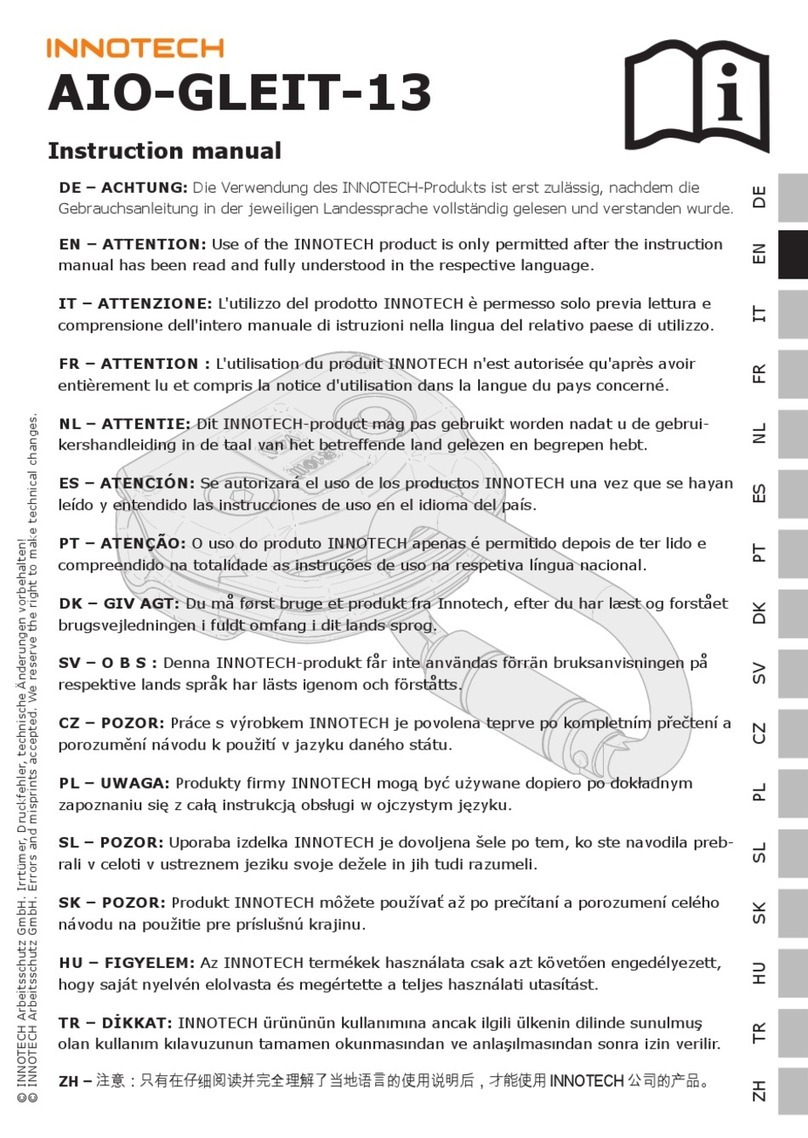
Innotech
Innotech AIO-GLEIT-13 instruction manual

ABB
ABB RELION 650 SERIES Communication protocol manual
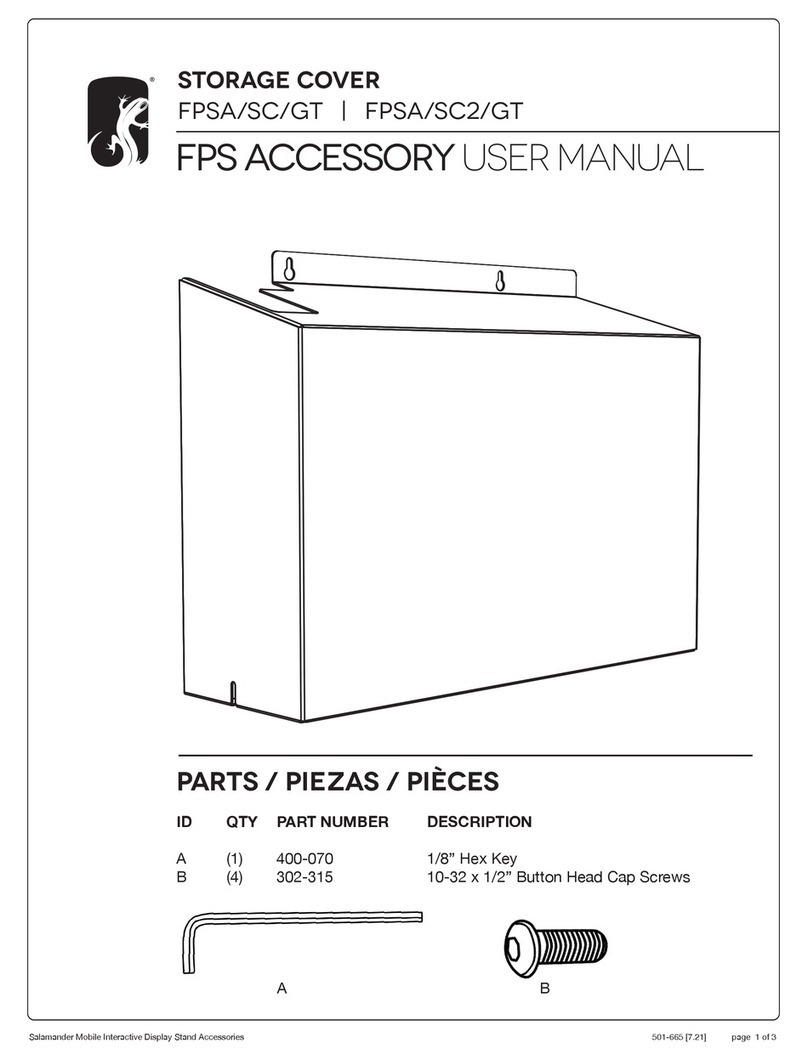
Salamander Designs
Salamander Designs FPSA/SC/GT user manual
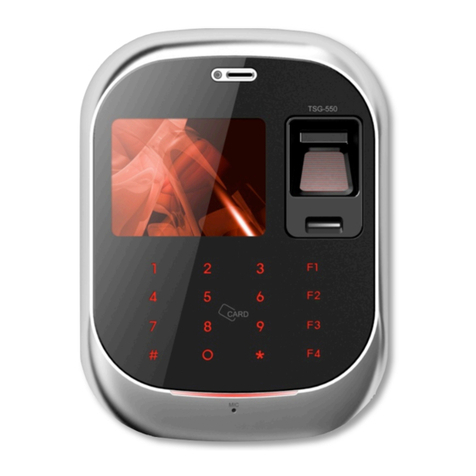
TrustOne Global
TrustOne Global TSG-550 Operation & installation manual

ABB
ABB Relion REG670 Technical manual

Protekt
Protekt AZ 640 Series instruction manual

Simunition
Simunition FX 9003 User instruction guide
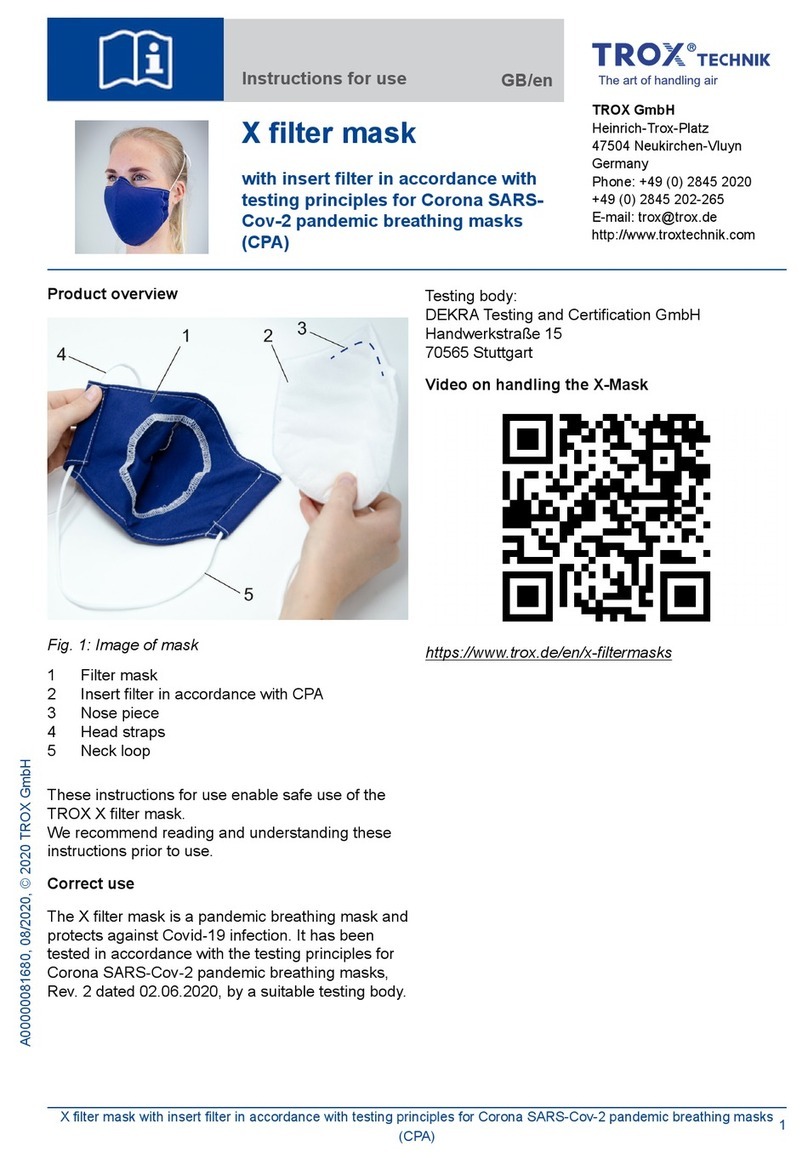
Trox Technik
Trox Technik X filter mask Instructions for use
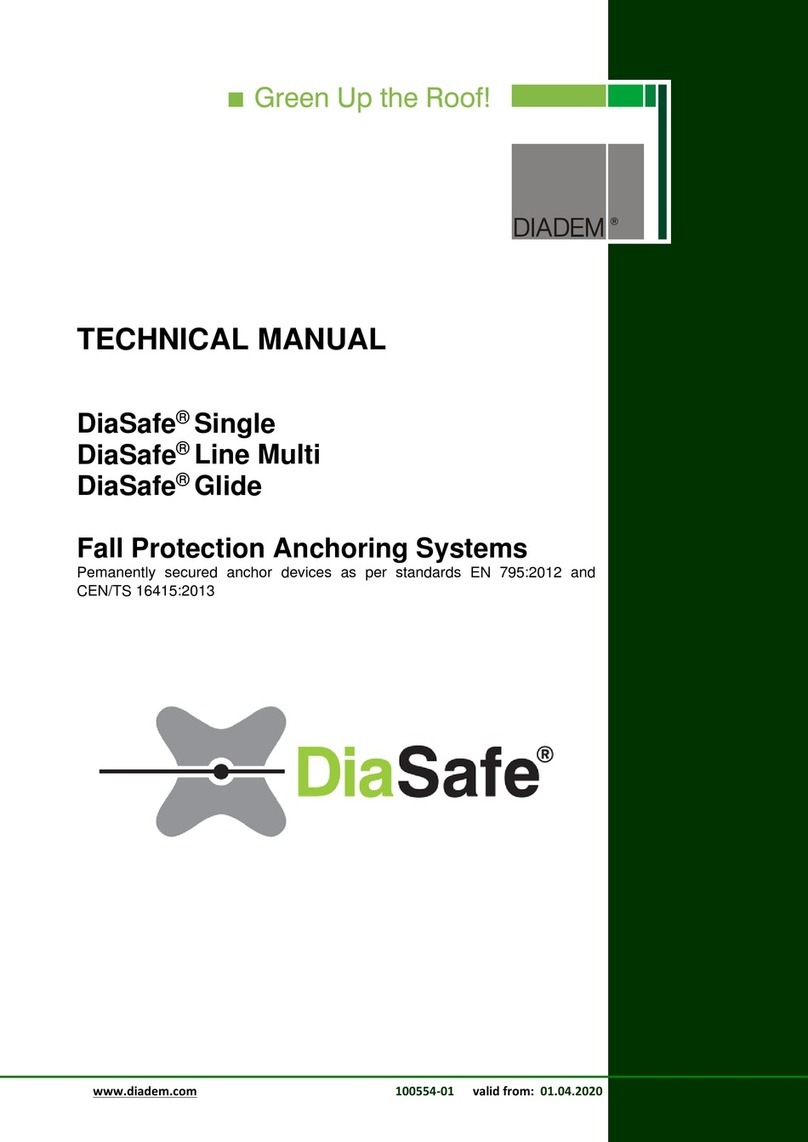
DIADEM
DIADEM DiaSafe Single Technical manual

RS
RS Peltor HTRXS Instruction leaflet
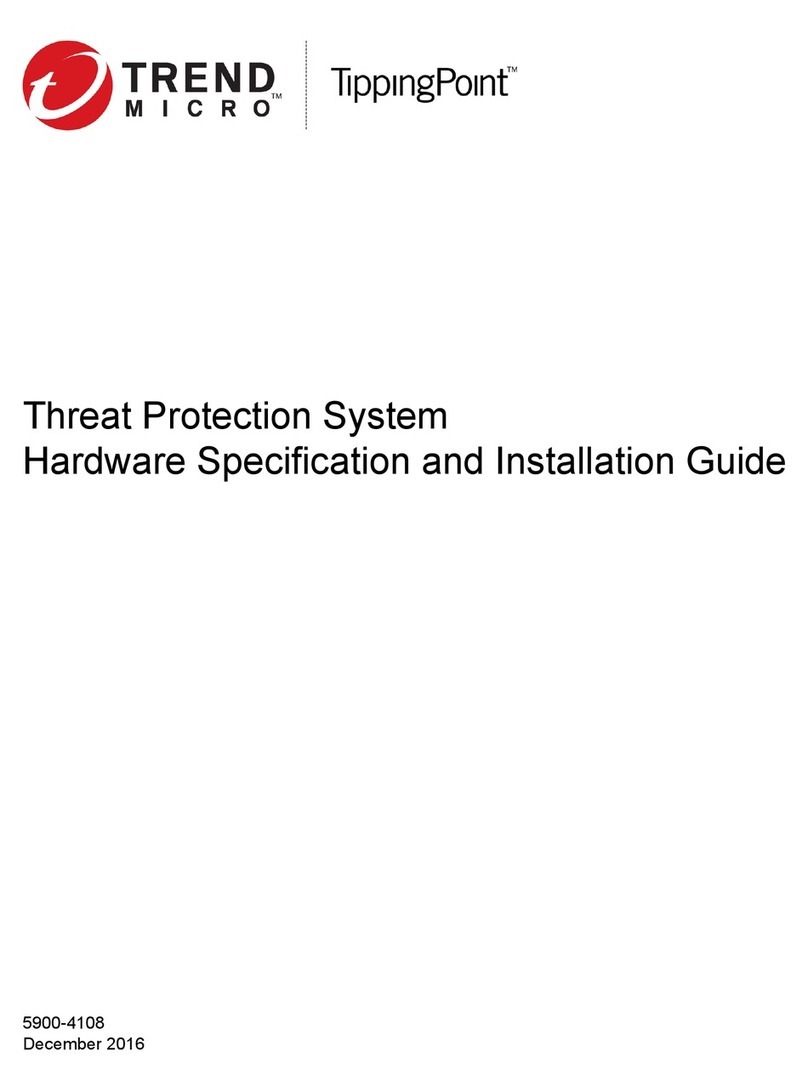
Trend Micro
Trend Micro TippingPoint 2200T Hardware Specification and Installation Guide
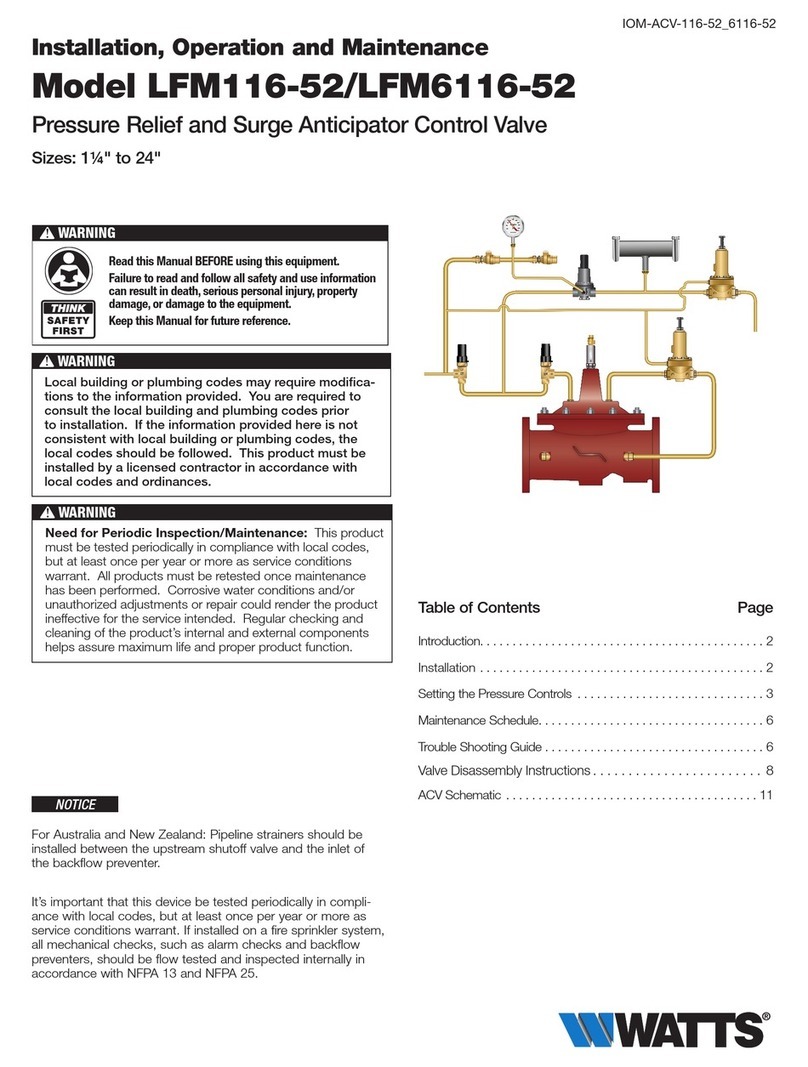
Watts
Watts LFM116-52 Installation, operation and maintenance
